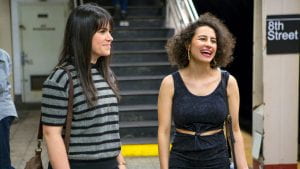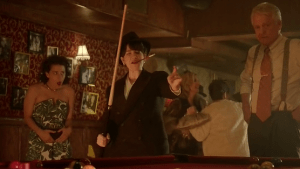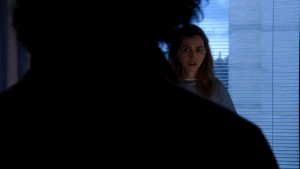For the second Blog Entry, I am focusing on the Cinematography and direction of the “Elaine’s Big Day”, the last episode of season 2 of New Girl.
In this episode, there are a lot of major plot twists. For example, Jess’s best friend, Elaine cancels her wedding, and Jess and Nick decide to call their relationship off. These big changes are well represented by the cinematography and direction.
This episode is shot in lots of quick cuts. These quick cuts allow the show to jump from one scene to another in a short time. It matters because these sudden switches of scenes allow two plots to proceed at the same time. This means that the quick cuts add to the dramatic effect of the two huge events, sabotaging the wedding and the conflict between Jess and Nick, that are occurring in this episode.
The color scheme of this episode is red and gold. Since it tries to portray a traditional Indian wedding, it has bright colors involved. Especially the red color indicates passionate love or anger. It correlates with the fact that Elaine admits that her true love is Schmidt and the feeling that Jess or Nick felt when they decided to break up.
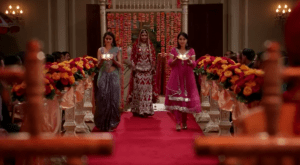
Elaine walks down the aisle. The main color is red.
I believe this episode stands out because it had many different bright colors such as red and gold. It defines the importance of the finale of this season and indicates the major changes in their relationships. Also, the lighting of this episode stood out from other episodes of this season. When the wedding was in process, the lighting was very bright. However, after the wedding, the lighting became dull in the scene where Jess and Nick ended their relationship. This dull lighting was also observed when Nick goes to the bartender for a beer. This lighting helps the viewer to interpret the feelings of characters.
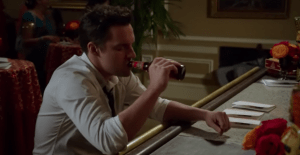
Nick is depressed after the break up. Dull lighting is noticed.

